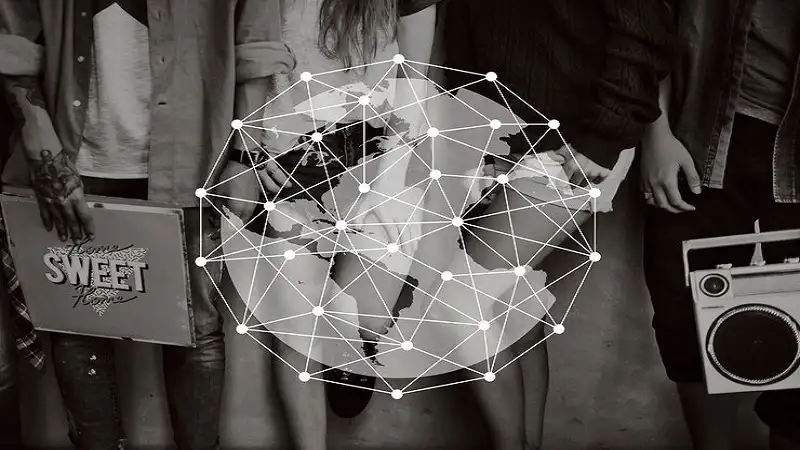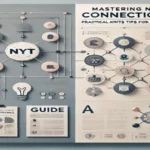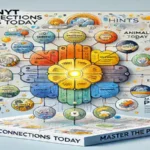The New York Times Connections game is a popular word puzzle that challenges players to identify groups of related words. Each puzzle presents 16 words, and players must categorize them into four groups, each containing four words. The challenge lies in the fact that many words could fit into multiple categories, and the key to success is recognizing subtle connections between seemingly unrelated words.
You’re not alone if you’re struggling with a specific puzzle, like the one from November 30. In this article, we’ll walk through NYT Connections hints for November 30, provide helpful tips for solving these puzzles, and offer practical steps for becoming a better player over time. Whether you’re a seasoned player or a newcomer, these strategies will enhance your game experience and help you unlock those tricky connections.
Understanding NYT Connections
Before diving into the specifics of the November 30 puzzle, let’s take a moment to refresh your understanding of how NYT Connections works. The objective of the game is to categorize 16 words into four groups based on their relationships. The clues may be based on a range of topics, including categories like colors, animals, historical figures, famous places, or even thematic connections such as “things that are cold” or “items found in a kitchen.”
Each word must be categorized correctly to progress, and some distinct features make this game unique:
- Multiple Valid Solutions: Many puzzles have more than one possible solution, making it essential to think creatively and flexibly.
- Time Pressure: While there’s no explicit time limit, players often aim to solve the puzzle in under a few minutes to challenge their mental agility.
- Hints and Tips: The NYT Connections game occasionally offers hints or starter clues, but even without them, players can still master the puzzle using smart strategies.
NYT Connections Hints for November 30: Step-by-Step Guide
If you’re facing the NYT Connections hints for November 30, these actionable tips will help you break down the puzzle and find the connections with confidence.
1. Start with the Obvious Categories
In each puzzle, there will usually be a few categories that are relatively easy to identify. For example, if you see a series of words like “whale,” “shark,” “dolphin,” and “seal,” it’s clear that these words all belong to the category of marine animals. Starting with the obvious connections gives you a sense of direction and will help you narrow down the remaining words.
2. Look for Patterns in the Words
Sometimes, finding patterns within the words themselves can unlock potential connections. These patterns may involve:
- Shared Prefixes or Suffixes: Look for words with common beginnings or endings.
- Related Themes: Words like “basket,” “ball,” “court,” and “hoop” could easily fit into a sports-related category, for example.
- Synonyms and Antonyms: Sometimes, words with similar or opposite meanings can be grouped together.
3. Work with a Process of Elimination
If you’re unsure about a particular group, try to eliminate categories that don’t seem to fit. For instance, if you have a word like “apple,” you might first eliminate any categories that clearly don’t relate to fruits. As you systematically eliminate incorrect options, the remaining categories will start to make sense.
4. Consider Word Associations
In some cases, the connection between words may not be immediately obvious. In these situations, it can be helpful to consider associative thinking. For instance, a word like “moon” could connect to categories involving astronomy or even mythological figures. Similarly, the word “paper” could connect to something related to “materials,” “books,” or “crafts,” depending on the other words in the list.
5. Explore Less-Obvious Connections
Sometimes, the most difficult part of the puzzle is recognizing less obvious categories. These could be based on:
- Color Associations: Words like “sky,” “grass,” “emerald,” and “lemon” might seem unrelated at first, but they all share connections with colors.
- Geographical Connections: Cities, countries, and regions may appear together under certain geographic themes.
- Historical or Cultural Associations: Think about whether the words refer to people, places, or events from the same historical period or cultural context.
6. Use the Hints Wisely
If you find yourself completely stuck, take advantage of any available hints, if the game offers them. Some players opt to skip a particularly tricky word group in favor of focusing on the easier ones first. However, don’t rely too heavily on hints, as they can sometimes disrupt your flow or prevent you from discovering a connection yourself.
Practical Steps to Improve Your NYT Connections Skills
If you’re aiming to improve your performance in NYT Connections and solve puzzles more efficiently, here are a few tips that can help:
1. Play Daily to Build Familiarity
Like any game, the more you play NYT Connections, the better you’ll get. Each puzzle offers different combinations of words, but over time, you’ll start to recognize patterns and categories more easily. Playing regularly will improve your familiarity with the kinds of categories that typically appear.
2. Practice with Past Puzzles
If you want to get better without facing the pressure of solving a new puzzle every day, go back to older puzzles. Reviewing the NYT Connections hints from previous days can help you understand the types of connections that are often used and give you new strategies for approaching puzzles.
3. Engage with the Community
Join online communities or forums where people discuss NYT Connections. These discussions can give you insights into how other players approach the puzzle and offer tips that you may not have thought of. Sharing solutions and learning from others can help improve your game significantly.
4. Stay Calm and Focused
Sometimes, the pressure to solve a puzzle quickly can lead to mistakes. If you’re stuck, take a deep breath and give yourself a moment to refocus. It’s better to take your time and get the correct groupings than to rush and make a mistake that could derail your progress.
5. Experiment with Different Strategies
When playing NYT Connections, try different strategies depending on the puzzle. One day, you might focus on identifying the easiest categories first, while another day, you could try working with more complex or obscure connections. Experimenting with various methods will help you develop a more flexible approach.
Conclusion
NYT Connections is an engaging and challenging word puzzle game that tests your ability to identify relationships between seemingly unrelated words. The November 30 puzzle, like any puzzle, offers its own unique set of challenges, but with the tips and strategies shared in this article, you can approach it with confidence.
Remember to start with the most obvious connections, work through the puzzle systematically, and use a process of elimination when necessary. Keep practicing, and stay patient, and before long, you’ll be a pro at identifying connections and solving puzzles faster than ever. Happy puzzling!
Learn more Connection Hints


